Gluten-free focaccia bread—yeah, it sounds like one of those Pinterest recipes that should be amazing, but turns out gummy or dry, right? Honestly, I didn’t believe it at first either. But with the right ingredients and a few baking hacks, this classic Italian flatbread can be gloriously crispy on the outside, fluffy on the inside, and 100% gluten-free. If you’re dealing with celiac, gluten sensitivity, or just avoiding wheat, you don’t have to miss out on bakery-quality focaccia anymore.
Looking for inspiration? Try our Easy Gluten-Free Muffins Guide for another no-fail recipe.
Understanding Gluten-Free Focaccia Bread
What is Gluten-Free Focaccia and Why It’s Worth Making
Focaccia is that dreamy flatbread you dip in olive oil at fancy restaurants—crisp edges, soft middle, and a golden top dotted with rosemary and sea salt. Now, the catch: traditional focaccia is made with wheat flour, which gives it that stretchy, chewy bite. But if you’re gluten-free? Don’t sweat it. With the right tweaks, we can mimic that texture without the gluten.
So yes, gluten-free focaccia is totally possible. And not just “meh, okay” possible—but like, crowd-pleasing, potluck-stealing kind of good. You just need the right know-how (and I’ll walk you through it).
Key Benefits of Gluten-Free Baking (Health, Flavor, Flexibility)
Honestly, going gluten-free isn’t just about dodging wheat. A lot of folks say they feel way less bloated, have better digestion, or just more energy after cutting gluten. Plus, gluten-free baking opens up a world of cool flours—think rice, almond, oat, and sorghum—that bring different textures and nutrients to the table.
It’s also super adaptable. Once you master the base recipe, you can tweak your focaccia for any season or meal. Garlic and herb for dinner, maybe a sweet version with cinnamon sugar for brunch? Yup, you can do all that.
Learn more about gluten-free baking techniques in our Easy Gluten-Free Muffins Guide.set the foundation for successful gluten-free focaccia baking.
Essential Ingredients for Gluten-Free Focaccia Bread
Best Gluten-Free Flour Mixes for Focaccia
Okay, so this is where the magic really starts—your flour blend. Regular focaccia leans hard on gluten to get that structure and chew. But in our case? We’re using a combo of gluten-free flours to fake it ‘til we bake it.
Here’s what works best:
- Rice Flour: Light and mild, it gives structure without heaviness.
- Potato Starch: Adds that starchy softness you want in focaccia.
- Tapioca Flour: For stretch and chew—it’s a must.
- Sorghum or Millet: If you want a heartier, more rustic flavor.
You can mix your own or grab a good all-purpose GF blend (just make sure it has xanthan gum or you’ll need to add it yourself). Honestly, trial and error here is normal—some flours act totally weird depending on the humidity or even your oven.
Want something unique? Don’t miss our Gluten-Free Rye Bread for a deeper flavor profile that can inspire tweaks in your focaccia blend.
How Binders Like Xanthan Gum Make a Difference
Here’s the not-so-secret trick behind gluten-free baking success: binders. Since there’s no gluten to trap air and give that nice lift, we bring in backups.
- Xanthan Gum: The MVP. Just a little (½ tsp per cup of flour) adds the elasticity and stickiness that helps the dough hold its shape.
- Psyllium Husk: Great for a bready texture—think sandwich bread or thick focaccia.
- Ground Flaxseed or Chia: These are more for moisture and structure but can totally help if you’re going more natural.
And if you’re asking, “What even is xanthan gum?”—Don’t worry. We break it down in this post: The Truth About Xanthan Gum.
Bonus: Don’t Forget the Flavor Makers
You’ll want to add some fat (like olive oil—essential for focaccia), a pinch of sugar or honey (feeds the yeast!), and a little salt. Oh, and fresh rosemary? Non-negotiable.
Awesome! Let’s jump into Part 3, where the real fun (and floury mess) begins.
Step-by-Step Gluten-Free Focaccia Recipe
Making the Dough: Mixing, Resting, and Proofing
Alright, here’s where we roll up our sleeves. Making gluten-free focaccia dough isn’t quite the same as regular bread—you’re working with more of a batter than a firm dough, and that’s totally okay. Trust the process.
Step-by-Step Dough Prep:
- Activate the Yeast
Mix warm water (about 110°F), a spoon of sugar, and dry active yeast. Let it sit for 5–10 minutes until it gets frothy. No bubbles? Your yeast’s probably dead—toss it. - Mix the Dry Ingredients
In a large bowl, combine your GF flour blend (about 2 cups), salt, and xanthan gum (if it’s not already in the mix). - Add Wet Ingredients
Pour in the yeast mix and a couple tablespoons of olive oil. Stir until smooth. It’ll be sticky—don’t panic.
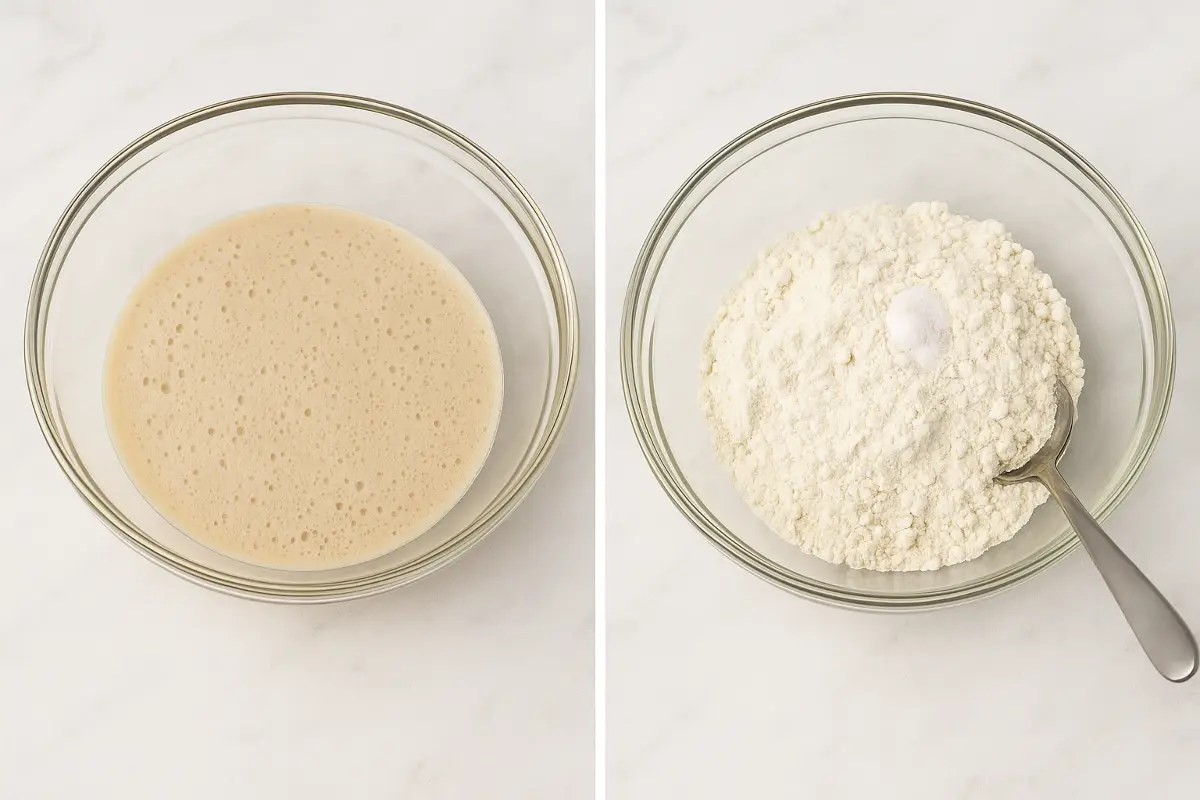
- Let it Rest
Cover with a towel and let it rise for 30–45 minutes. It won’t double like gluten dough, but you should see some puffiness. - Transfer to Pan
Oil a baking dish or cast iron pan, pour in the dough, and spread it gently with oiled hands. Dimple the top with your fingers (classic focaccia move).
Need a good pan? This cast iron baking pan on Amazon works wonders for achieving that crispy crust and even bake.
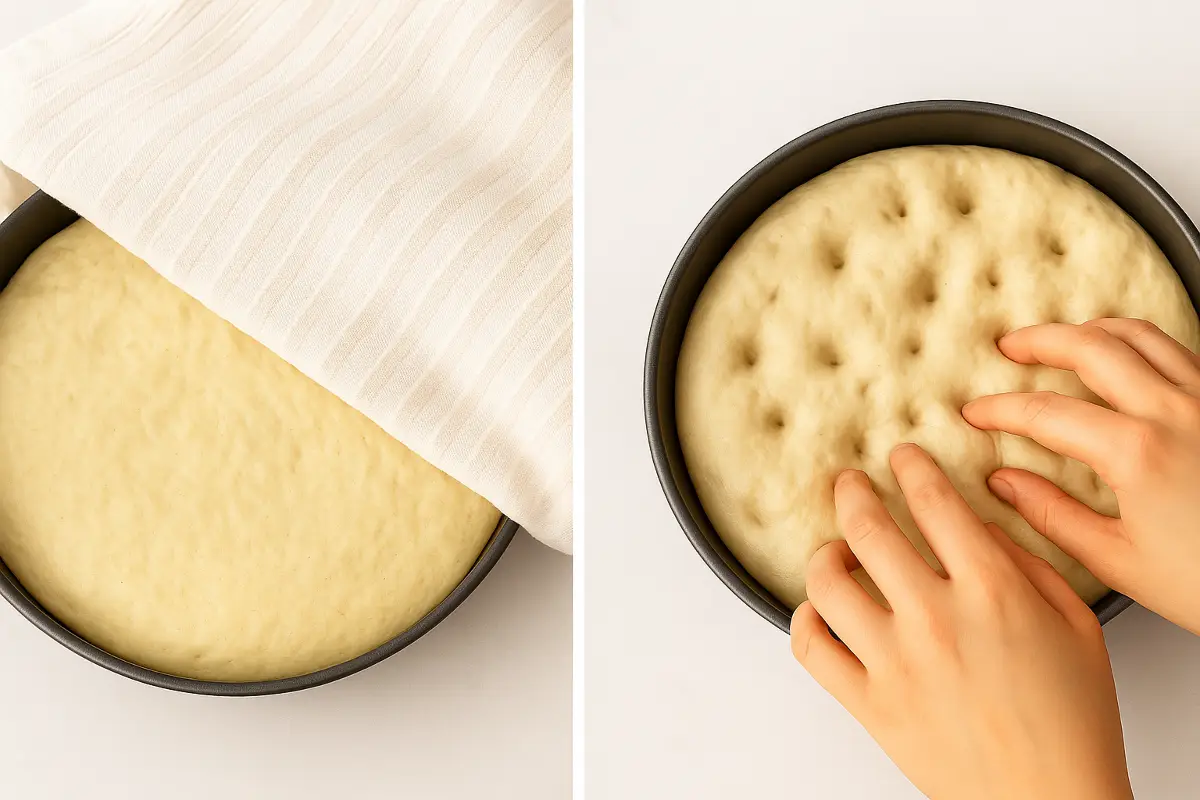
Check out our Gluten-Free Sourdough Bread Recipe for more in-depth bread-making techniques.
Baking Tips for Texture, Crust, and Aroma
Now for the grand finale—baking!
- Preheat your oven to 400°F. Hot and steady is key.
- Top it up: Add rosemary, sea salt, minced garlic, or cherry tomatoes.
- Bake for 25–30 minutes, until the edges are golden and a toothpick comes out clean from the center.
- Let it cool for at least 10 minutes so the steam settles inside. It helps avoid that gummy middle.
Pro Tip: If your bread is still turning out mushy, you might be adding too much moisture—or not baking it long enough. Every oven’s different, so tweak the time by a few minutes if needed.
Common Mistakes and Fixes in Gluten-Free Bread Making
Why Your Focaccia Might Not Rise – And How to Fix It
Let’s face it—nothing kills the vibe like opening the oven to find a sad, flat focaccia. If your gluten-free dough isn’t rising, here’s what might be going wrong:
- Your Yeast Is Dead: Seriously, always test it before mixing. No bubbles = no rise.
- Water Was Too Hot (or Too Cold): Aim for 105–110°F. Hotter? It kills the yeast. Colder? It just…snoozes.
- Not Enough Proof Time: Gluten-free dough needs patience. Give it at least 30–45 minutes, and don’t rush it.
- Too Much Salt Too Early: Salt can inhibit yeast if it’s dumped in before mixing properly. Mix your dry ingredients well first.
Honestly, one of the most frustrating things is nailing the flavor and texture but getting that underwhelming lift. Don’t stress—it’s part of the process.
Discover great ideas like our Gluten-Free Rye Bread Recipe to see how other gluten-free doughs behave.
Avoiding Dryness, Cracking, or Gummy Centers
Gluten-free focaccia walks a tightrope between “rock hard” and “soggy sponge.” Here’s how to stay on the golden path:
- Don’t Overbake: Just because it’s gluten-free doesn’t mean it needs 10 extra minutes. Use a toothpick test.
- Add Enough Fat: Olive oil keeps it tender. Don’t skimp—it’s not just for flavor.
- Check Your Hydration: Gluten-free dough should be wetter than traditional dough. Sticky is okay!
- Use the Right Pan: Metal or cast iron pans promote even browning. Glass can leave it too moist.
And here’s the weird trick: let your bread totally cool before slicing. Like, resist that warm, fresh-out-of-the-oven pull (just for 15 minutes). It finishes cooking and setting during that rest time.
Customizing Your Focaccia with Toppings
Herbs, Sea Salt, Garlic, and Tomato Variations
Now that you’ve nailed the base, it’s time to play. One of the best things about focaccia is how versatile it is. You can go savory, sweet, spicy—you name it.
Here are some of the top add-ons that’ll seriously level up your loaf:
- Fresh Rosemary + Sea Salt (classic and unbeatable)
- Cherry Tomatoes + Red Onion (juicy and slightly sweet)
- Caramelized Onions + Thyme (for that cozy, fall bakery vibe)
- Garlic + Olive Oil + Cracked Pepper (bold and punchy)
Tip: Press your toppings into the dough before baking so they don’t burn or fall off. And don’t forget a generous drizzle of olive oil over the top.
Want a twist on flavor? Looking for inspiration? Try our Gluten-Free Cranberry Orange Bread to explore a fruity flavor that could totally work in a sweeter focaccia variation.
Sweet vs. Savory Twists
Wait—sweet focaccia? Yup, it’s a thing.
Try these if you’re feelin’ adventurous:
- Cinnamon Sugar + Raisins
- Maple Drizzle + Walnuts
- Apple Slices + Brown Sugar
Just tone down the salt in your base dough, and maybe swap olive oil for a neutral oil or even melted coconut oil. It’s a vibe.
You can also make mini focaccias in a muffin tin for single servings (great for parties or meal prep). Let the toppings do the talking.
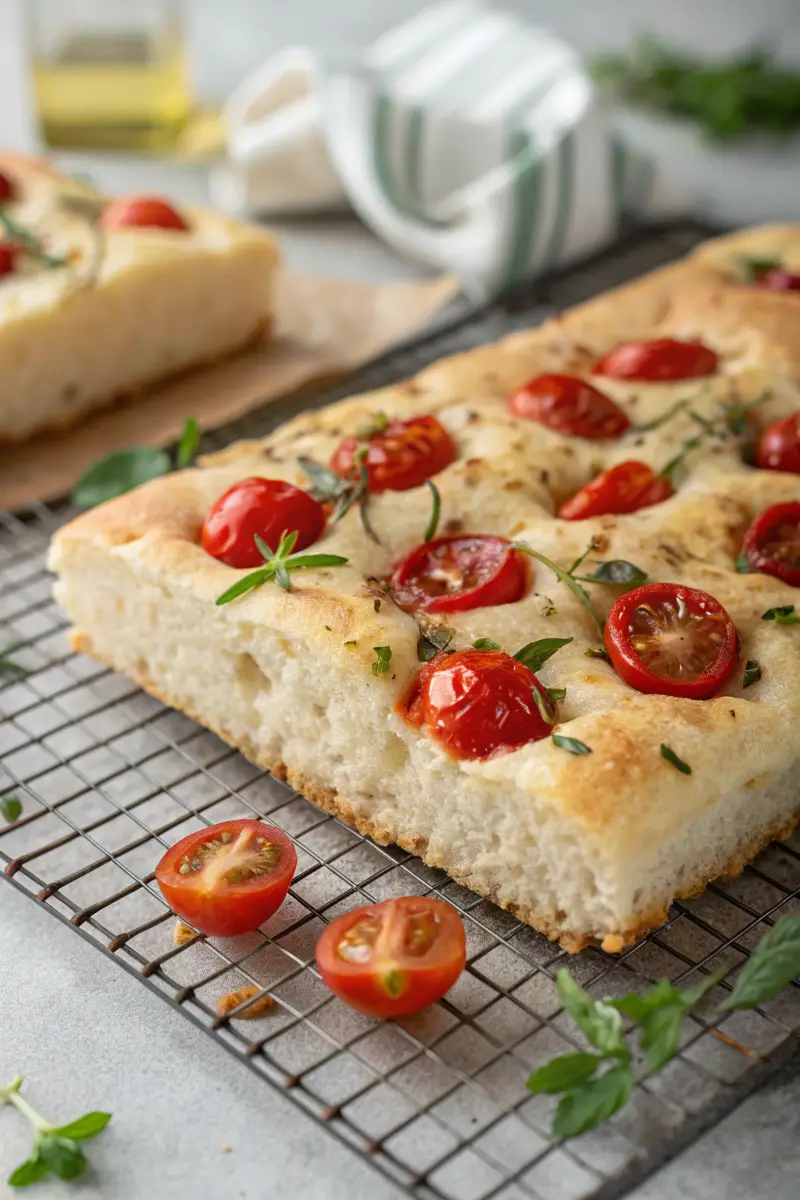
Bread Maker Tips for Gluten-Free Dough
Can You Use a Bread Machine for Gluten-Free Focaccia?
You bet. But here’s the deal: not all bread makers are created equal when it comes to gluten-free settings. If your machine has a gluten-free mode, awesome—you’re halfway there. If not, you’ll just need to tweak the process a bit.
Here’s what makes bread machines tricky for gluten-free dough:
- The mixing and rising stages happen fast.
- Some machines over-mix, which messes with texture.
- Most aren’t designed for wetter, stickier gluten-free batters.
But don’t give up! With a little finesse, your bread maker can actually make things easier.
Adjusting Settings and Tips for Best Results
If your machine has a gluten-free setting, use that. It’s usually a shorter rise and bake time, designed for denser doughs. But if you’re going manual, here’s the move:
- Mix the dough outside the machine first (this avoids over-mixing).
- Let it rise in the machine (covered, with the heat on low if possible).
- Bake directly in the pan or transfer to a cast iron for better crust.
Some machines let you program custom cycles, which is gold for GF bakers. You’ll want:
- Mix: 3–5 mins
- Rise: 30–45 mins
- Bake: 25–35 mins
Need ideas for how to experiment more? Don’t miss our Ultimate Gluten-Free Chicken Pot Pie Recipe—not bread-related, but full of tips for baking gluten-free dough-based dishes that don’t fall apart.
Storing and Serving Gluten-Free Focaccia
How to Keep it Fresh Longer
So you finally nailed the bake, and now you’re thinking, “How do I keep this beautiful thing from going stale overnight?” Gluten-free bread has a reputation for drying out fast, but there are easy fixes:
- Wrap it in parchment, then foil: Keeps it from getting soggy while still locking in moisture.
- Store at room temp (1–2 days): A cool pantry is best—avoid the fridge, which dries it out.
- Freeze for longer shelf life: Slice it first, layer with parchment, and freeze in a zip bag. Just reheat in the oven at 350°F for 5–7 minutes.
Honestly, freezing is the move if you’re meal prepping or making extra. It comes out tasting just as fresh—sometimes better.
Best Pairings for Meals and Snacks
Gluten-free focaccia is basically the Swiss Army knife of baked goods. You can serve it:
- With soups (creamy tomato, minestrone, even a spicy lentil)
- As sandwich bread (slice horizontally—game changer)
- To soak up sauces (pasta, stews, you name it)
- As a breakfast base (try it toasted with eggs or smashed avocado)
Want more GF bread inspiration? Check out our Gluten-Free Sandwiches You’ll Love for serving ideas you can use with leftover focaccia slices.
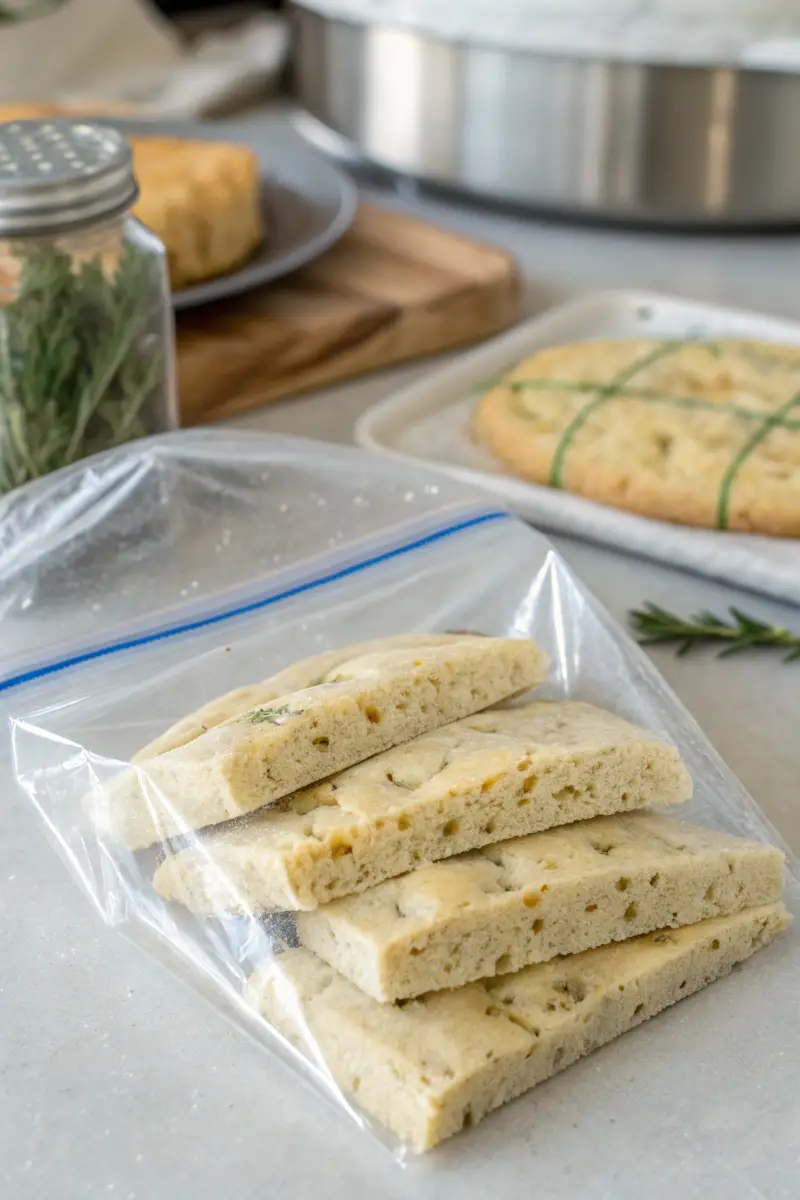
FAQs About Gluten-Free Focaccia Bread
Totally! You don’t need wheat flour to enjoy the soft, chewy magic of focaccia. The trick is using the right mix of gluten-free flours (like rice, potato, and tapioca) and a good binder like xanthan gum or psyllium husk. With the right ratios and a solid baking method, you can create a focaccia that tastes just as good—maybe better—than the traditional version.
Ugh, we’ve all been there. A few common reasons:
– Old or inactive yeast (check that expiration date!)
– Water that’s too hot or too cold
– Not enough time to proof
– Too much salt added too early
Make sure your dough is warm and covered during proofing. And don’t stress if it doesn’t rise like gluten bread—it’ll still turn out tasty with the right texture.
Honestly? It’s all about hydration and patience. Gluten-free doughs are wetter than traditional ones, which feels wrong but is actually so right. Use olive oil generously, don’t skip your binders, and let that dough rise in a warm spot. Oh—and let it cool completely before slicing to avoid gumminess.
Want to dive deeper into baking hacks? Check out our Gluten-Free Sourdough Bread Recipe for tips that work for focaccia too.
They can be, but it depends on the model. Look for one with a gluten-free setting (or programmable cycles). You might still need to mix your dough by hand to control texture, but the machine can handle the rising and baking stages like a champ.
Need help picking flours? Don’t miss our post on the Best Bread Options for Gluten Intolerance—perfect if you’re trying to experiment with other GF recipes too.
Conclusion and Final Tips
Honestly, gluten-free focaccia bread might sound intimidating at first, but once you get the hang of the flour blends, hydration, and rise time, it’s surprisingly doable—and ridiculously good. Whether you’re topping it with sea salt and rosemary or loading it up with garlic and tomatoes, the flavors pop just as hard as any wheat version.
Just remember: your dough will look more like batter, your proof might feel slower, and the bake time might need a minute or two extra. That’s all part of the gluten-free game. Stick with it, play around, and you’ll end up with a focaccia that’s golden, fluffy, and flat-out addictive.
Want to keep the ideas coming?
- Follow us on Facebook for daily gluten-free recipe tips
- Check out our Instagram to see what we’re baking this week
- Explore our boards on Pinterest for more creative gluten-free dishes
Looking for more comfort food that fits your gluten-free life? Don’t miss our Easy Gluten-Free Chicken Pot Pie Recipe.
Print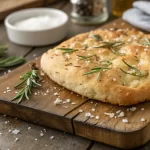
Gluten Free Thin Mints
- Total Time: 25 minutes
- Yield: 24 cookies 1x
- Diet: Gluten Free
Description
Gluten Free Thin Mints are the crunchy, minty snack your sweet tooth deserves—without the gluten drama. Crisp, chocolatey, and pepperminty, they’re everything you love in a cookie—just safer for your gut.
Ingredients
- 1 cup gluten-free flour blend
- ½ cup unsweetened cocoa powder
- ½ cup coconut oil or vegan butter, melted
- ⅓ cup maple syrup or sugar
- ½ tsp baking soda
- ½ tsp peppermint extract
- Pinch of salt
- ¾ cup dark chocolate chips or baking chocolate (for coating)
- 1 tsp coconut oil (to smooth out the chocolate)
Instructions
- Mix dry ingredients in one bowl, wet in another. Combine until smooth. Chill dough for 30 minutes.
- Roll dough between parchment sheets. Cut into circles.
- Bake at 350°F for 8–10 minutes. Cool completely.
- Melt chocolate with coconut oil in microwave, stirring every 20 seconds.
- Dip each cookie in melted chocolate, coat evenly, and place on parchment to cool.
- Chill cookies in fridge for 15–20 minutes to set the coating.
Notes
For extra flavor, sprinkle flaky sea salt before chocolate sets. Always check labels if baking for someone with celiac disease.
- Prep Time: 15 minutes
- Cook Time: 10 minutes
- Category: Dessert
- Method: Baking
- Cuisine: American
Nutrition
- Serving Size: 1 cookie
- Calories: 75
- Sugar: 5g
- Sodium: 45mg
- Fat: 5g
- Saturated Fat: 3g
- Unsaturated Fat: 2g
- Trans Fat: 0g
- Carbohydrates: 10g
- Fiber: 1g
- Protein: 1g
- Cholesterol: 0mg
Keywords: gluten free, thin mints, chocolate mint cookies, homemade thin mints





